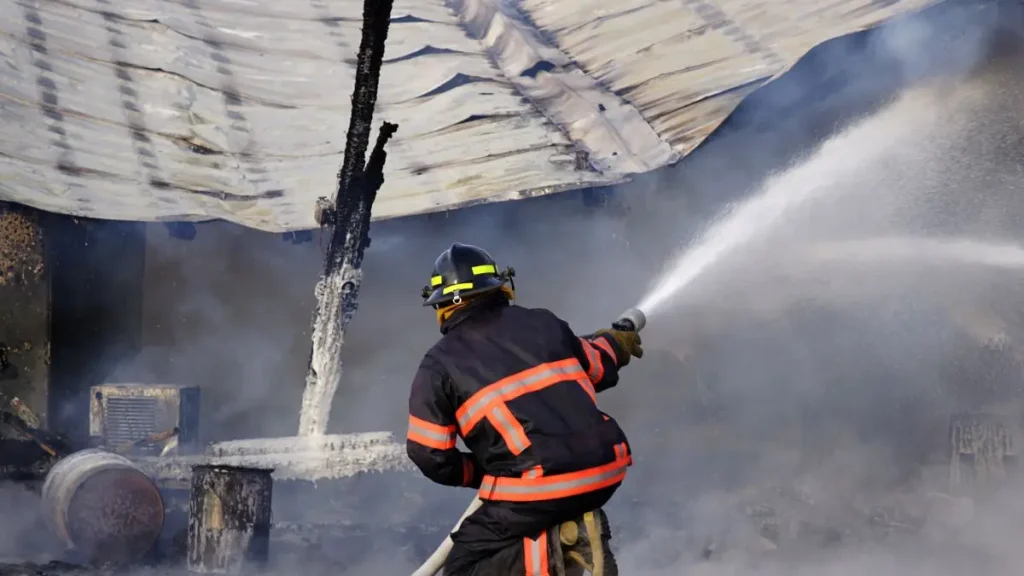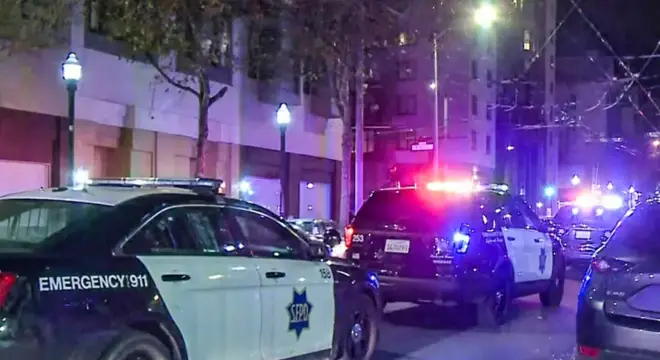Historic Virginia Home Destroyed by Fire, Body Discovered Inside
I woke up Tuesday morning scrolling through the news when I saw it—a massive fire had engulfed a home on Court Street in Portsmouth. Just before 6 a.m., firefighters rushed to the scene, and I couldn’t help but picture the chaos: smoke rising high into the sky, flames breaking through the roof, and emergency crews working frantically to contain it.
By the time the first fire trucks arrived, about 12 units and three medic teams were already mobilized, along with multiple police officers. I keep thinking about how fast they had to act, knowing that every second counts in a residential fire. Tragically, one person didn’t make it, though officials haven’t released their identity yet.
Neighbors described the scene as devastating. I can almost hear their voices as they talk about the home, cherished by the same family for five generations, full of keepsakes like a letter signed by Thomas Jefferson. Two sisters lived there, and the community feels the loss deeply—it’s not just a house; it’s a piece of Portsmouth’s heart.
Even now, as investigators work to figure out what caused the fire and whether anyone else was inside, I can’t shake the image of those firefighters battling the blaze under difficult conditions—trees and surrounding structures making every move riskier.
If you’ve ever lived in an older home, I think this story hits harder. Fires can destroy more than walls—they erase history, memories, and moments that matter.
Have you checked the fire safety measures in your home lately? It might be worth taking a minute today to walk through your own escape plan and check alarms.
The Historic Home and Its Significance

When I read that this home had been in the same family for five generations, I realized this wasn’t just another house—it was a living memory of Portsmouth. According to 13NewsNow, neighbors described the home as “full of timeless keepsakes,” including a letter signed by Thomas Jefferson. Imagine the stories those walls held.
Two sisters lived there, and from what neighbors said, the family had built and maintained this house for generations. Walking through Olde Towne, you can feel the history in these homes, and losing one is like losing a chapter of the community’s story.
It’s hard not to think about the personal side—the family photos, heirlooms, and memories that fire doesn’t discriminate against. I feel for the neighbors who grew up seeing this house every day, a landmark that tied the past to the present.
Losing a home like the Maupin residence reminds me of other tragic losses, such as the Cumberland County home destroyed in a fire, which underscores how quickly history and memories can vanish.
Emergency Response and Firefighting Efforts
Reading about how the fire unfolded, I kept picturing the firefighters arriving “just before 6 a.m.” They quickly activated their residential structure fire plan, and roughly 12 fire trucks, three medic units, and several police officers responded. That’s a huge mobilization in a matter of minutes.
The flames were so intense they broke through a temperature inversion, sending smoke high into the sky. Crews had to navigate nearby trees and other structures, making containment even trickier. Even as someone reading from home, you can appreciate the level of skill, risk, and coordination that goes into controlling a fire like this.
By late morning, the fire was under control, but the damage had already been done. I can’t stop thinking about the split-second decisions the firefighters had to make—who to rescue first, how to prevent the fire from spreading, and how to protect themselves while saving others.
Fires in residential areas can escalate quickly, just like the Peoria house fire that caused $20,000 in property damage earlier this year, reminding us how important immediate response is.
Fire Hazards in Older Homes
If you live in an older home or a historic neighborhood, this story hits close to home. Older materials, original wiring, and outdated layouts make fires spread faster than many of us realize.
I’ve walked through homes like this before, and it’s easy to underestimate how small issues—a loose outlet, an old wood floor, or inadequate fireproofing—can turn catastrophic.
The Court Street fire shows that preserving a home’s history comes with responsibilities. You need to balance nostalgia with safety. Installing smoke detectors, keeping fire extinguishers handy, and reviewing escape routes regularly isn’t optional—it’s essential.
For more real-time updates on local fires and safety tips, I sometimes share quick alerts and safety reminders via a WhatsApp channel—it’s a handy way to stay informed in your area.
Community Reaction
One thing that struck me while reading these reports was the community’s response. Neighbors told WAVY that the house had been in the same family for generations, and the loss hit them hard.
People were sharing memories of the family and the home, describing it as a central part of the Olde Towne identity.
It made me think about how communities rally around tragedy. Whether it’s organizing fundraisers, helping with temporary housing, or simply offering moral support, these reactions matter.
Fire doesn’t just destroy structures; it shakes the emotional foundation of a neighborhood.
Older structures are particularly vulnerable; similar risks were highlighted in the Westmoreland County house fire where outdated wiring contributed to severe property damage.
Lessons and Takeaways

Here’s what I’m taking from this fire—and what you can too:
- Check your home’s fire readiness. Smoke alarms, escape plans, and emergency numbers are your first line of defense.
- Respect the risks in older homes. Preservation is beautiful, but it needs proactive safety measures.
- Value your neighbors and community. They’re often the first to respond when disaster strikes.
- Document your treasures. You never know when disaster might strike, so keep digital records of priceless items.
It’s sobering to realize that in minutes, a lifetime of history and memories can vanish. But taking small steps today—checking alarms, planning escapes, talking to your family—can make all the difference.
Have you ever walked through your home imagining a fire scenario? If not, maybe today’s the day. It’s not morbid—it’s smart.
Fire Prevention Tips for Older and Historic Homes
Reading about the Court Street fire made me think: what could have been done to reduce risk? If you live in an older home, like the Maupin family home, there are a few practical steps you can take right now.
- Smoke detectors everywhere: Make sure they’re in bedrooms, hallways, and kitchens. Test them monthly—I can’t stress this enough.
- Fire extinguishers in key areas: Keep one in the kitchen, garage, and near main living areas. Know how to use it.
- Escape plan with your family: Walk through every exit route, and assign meeting points outside. Practice it.
- Electrical safety checks: Old wiring can be a hidden hazard. Hire a licensed electrician to inspect periodically.
These aren’t expensive upgrades—they’re lifesavers. Looking at how quickly the Court Street fire escalated, I realize how small preventive actions can change outcomes.
Key Takeaways and Reflections
Here’s what I’m taking away from this tragic fire—and what I hope you can too:
- Every home needs a plan: Don’t assume fires only happen elsewhere. Make your escape routes clear.
- Historic homes are beautiful, but risky: Respect preservation, but prioritize modern safety measures.
- Community matters: Neighbors can be lifesavers before first responders arrive.
- Check your preparedness now: Smoke alarms, fire extinguishers, emergency contacts—it all counts.
Reading about the Court Street fire makes me pause and think: if something happened tomorrow, would my family be ready? I encourage you to do the same. Take a few minutes today to walk through your home, visualize potential hazards, and make a plan.
When was the last time you actually tested your fire escape plan? If you haven’t, take five minutes today—it could save a life.
If you want to read more stories about fire incidents and home safety tips, check out our Home Incidents category for detailed updates and expert advice.
Disclaimer: This article is for informational purposes only and does not constitute legal or safety advice. Always follow local fire regulations and consult professionals for home safety concerns. The publisher is not responsible for any actions taken based on this content.


